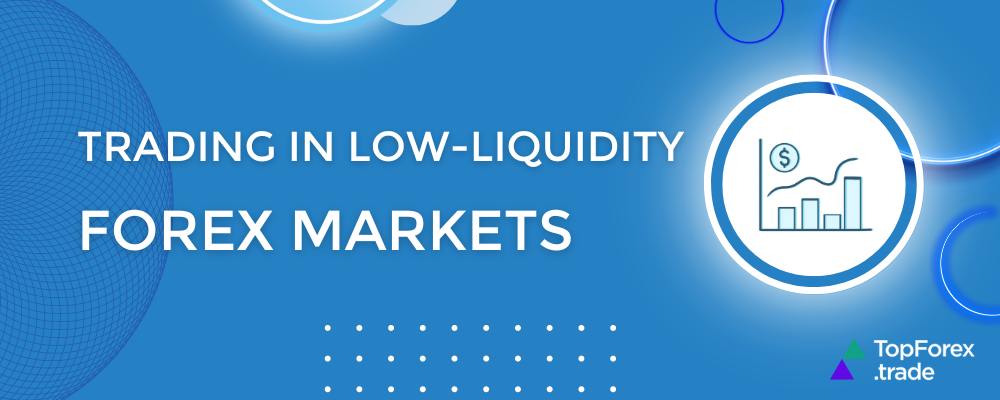Trading in low-liquidity FX markets: risks and opportunities

Navigating the foreign exchange (FX) market can be a daunting endeavor, especially when liquidity is low. Unlike the bustling scenes of high-liquidity markets, where trades happen in rapid succession, low-liquidity FX markets are characterized by fewer buyers and sellers, leading to increased volatility and wider spreads. While this environment poses significant risks, it also presents unique opportunities for savvy traders.
In this article, we will delve into the intricacies of trading in low-liquidity FX markets. We’ll explore the potential pitfalls that can catch even seasoned traders off guard, such as sudden price swings and slippage. On the flip side, we’ll uncover the strategies that can turn these challenges into profitable ventures, leveraging the very volatility that deters many. Whether you’re a cautious investor looking to understand the risks or an opportunistic trader seeking to exploit market inefficiencies, this guide aims to equip you with the knowledge to navigate low-liquidity FX markets with confidence.
Understanding low-liquidity FX markets

Low-liquidity FX markets are characterized by a limited number of active participants and lower trading volumes compared to high-liquidity markets. In these markets, buying and selling currencies can be more challenging due to fewer market participants and less trading activity. This lack of liquidity often results in wider bid-ask spreads, slower trade execution, and greater price volatility. These markets can be influenced by regional economic factors, geopolitical events, or the nature of the currencies being traded.
Risks of trading in low-liquidity FX markets
- Increased volatility: With fewer transactions taking place, even small trades can lead to significant price movements. This can result in greater unpredictability and the potential for rapid and large swings in currency prices.
- Wider spreads: The difference between the bid (buy) and ask (sell) prices can be substantially wider in low-liquidity markets. This means that traders may face higher transaction costs and less favorable pricing when entering or exiting trades.
- Slippage: Due to the limited number of orders, trades may not be executed at the expected price, resulting in slippage. This discrepancy between the expected price and the actual execution price can erode profits or increase losses.
- Difficulty executing large orders: In a low-liquidity market, placing a large order can significantly impact the market price. This makes it difficult to execute large trades without causing adverse price movements.
- Market manipulation: The reduced number of market participants can make low-liquidity markets more susceptible to manipulation by traders with substantial capital, potentially leading to artificial price movements.
Pro tip: Check out the article about Forex brokers’ slippage.
Opportunities in low-liquidity FX markets

- Price inefficiencies: The lower trading volume can create opportunities to exploit price inefficiencies and gaps. Traders who can identify and act on these discrepancies might achieve substantial returns.
- Arbitrage: Traders can capitalize on price differences between related markets or currency pairs. Arbitrage strategies involve buying in one market and simultaneously selling in another to profit from the price discrepancy.
- Emerging market potential: Many low-liquidity FX markets are associated with emerging economies. As these economies develop and integrate more into the global financial system, they may offer significant growth opportunities for early investors.
- Higher returns: The volatility inherent in low-liquidity markets can lead to higher potential returns. Traders who can manage the associated risks effectively may benefit from substantial profits.
Examples of strategies for FX traders

- Limit orders: Using limit orders instead of market orders helps traders control the price at which they buy or sell. In low-liquidity markets, this can reduce the impact of wider spreads and minimize slippage.
Example: A trader wants to buy a currency pair at a specific price rather than the current market price. By setting a limit order at their desired price, they avoid buying at a higher price due to market fluctuations. - Scalping: Scalping involves making numerous small trades to capture small price movements. In low-liquidity markets, scalping can take advantage of minor inefficiencies and short-term price fluctuations.
Example: A trader enters and exits trades quickly to capitalize on small price movements, making several trades within a short period to accumulate small profits. - Market making: Market-making strategies involve providing liquidity by placing both buy and sell orders. Traders profit from the bid-ask spread and can benefit from the higher spreads in low-liquidity markets.
Example: A trader sets buy orders slightly below the current market price and sell orders slightly above it, capturing the spread between the bid and ask prices. - Technical analysis: Utilizing technical indicators and chart patterns can help traders identify potential entry and exit points. In low-liquidity markets, technical analysis can provide insights into price trends and potential reversals.
Example: A trader uses moving averages and trend lines to identify buy and sell signals based on historical price data and market trends. - Risk management: Implementing strict risk management techniques is crucial in low-liquidity markets. This includes setting stop-loss orders to limit potential losses and using appropriate position sizes to manage exposure.
Example: A trader sets a stop-loss order to automatically exit a trade if the price moves against them by a predetermined amount, minimizing potential losses. - Cross-market analysis: Analyzing related markets, such as commodities or equities, can provide additional context and insights into currency movements. Correlations between different markets can help traders make more informed decisions.
Example: A trader monitors the price of oil to anticipate movements in a currency pair correlated with oil prices, using this information to make trading decisions.
In conclusion, while trading in low-liquidity FX markets presents unique risks such as increased volatility and wider spreads, it also offers opportunities for those who are well-prepared. By employing strategies like limit orders, scalping, market making, technical analysis, and effective risk management, traders can navigate these markets and potentially capitalize on their distinctive characteristics.
Top Forex brokers for trading in low-liquidity FX markets
Navigating the complex world of low-liquidity FX markets requires not just skill and strategy, but also the right broker. Low-liquidity markets are characterized by fewer market participants, wider spreads, and higher volatility, making broker selection a critical factor in a trader’s success. The best brokers for trading in these conditions provide the tools and support needed to manage risks and capitalize on opportunities.
In this review, we present a curated list of top Forex brokers tailored for low-liquidity FX markets. These brokers have been selected based on their ability to offer competitive spreads, reliable trade execution, advanced trading platforms, and superior customer service. Additionally, they are regulated by reputable financial authorities, ensuring a secure trading environment.
XTB FX trading
XTB emerges as a leading choice for Forex and CFD trading, establishing a robust global presence in over 190 countries. Renowned for its dedication to financial security and transparency, XTB is regulated by esteemed authorities such as the FCA, CySEC, and KNF.
Offering over 1,500 CFDs across forex pairs, indices, commodities, shares, and cryptocurrencies, XTB presents a wide array of trading opportunities. Traders can take advantage of user-friendly platforms like xStation and MetaTrader 4, both equipped with advanced tools to facilitate informed decision-making.
Catering to various trading styles, XTB provides multiple account types, including Standard and swap-free options, each with tailored fees and benefits. Additionally, the broker offers a wealth of research and analysis resources, such as daily market insights, economic calendars, and webinars, enabling traders to stay ahead of market trends and significant events.
Exness FX trading
Exness is a highly regarded Forex broker, offering a diverse range of trading options including currency pairs, commodities, indices, and cryptocurrencies.
The broker is committed to regulatory compliance, operating under the supervision of esteemed authorities such as the FCA in the UK and CySEC in Cyprus, ensuring a secure trading environment.
Exness provides competitive spreads that vary by account type, with both Standard and Professional accounts available, each offering unique benefits and conditions.
Customer support is easily accessible through email, live chat, and phone. Traders can utilize popular platforms like MetaTrader 4 (MT4) and MetaTrader 5 (MT5), known for their user-friendly interfaces and advanced charting tools, ensuring a smooth trading experience.
BlackBull FX trading
BlackBull is a trusted and secure online Forex broker, known for its reliability. The company offers a diverse range of trading instruments, including commodities, currency pairs, stocks, futures, indices, and cryptocurrencies, ensuring genuine market access.
Regulated in Seychelles, BlackBull prioritizes trader safety. The broker provides various account types, including standard, prime, institutional, and Islamic (no swap) accounts, along with a demo account for risk-free practice.
BlackBull excels with its versatile trading platforms, including MT4, MT5, cTrader, Web Trader, and TradingView. The broker also offers dedicated platforms like BlackBull CopyTrader and BlackBull Shares, as well as mobile and tablet apps for convenient access.
Committed to trader education, BlackBull offers an educational hub, webinars, and tutorials to help traders enhance their skills and market knowledge.
NAGA Markets FX trading
NAGA Markets is a reputable global brokerage firm, offering over 1,000 instruments including currency pairs, stocks, indices, commodities, and ETFs. This diverse portfolio enables ample opportunities for growth and diversification.
For beginners and those seeking automated trading, NAGA offers the NAGA Autocopy tool, allowing traders to replicate successful strategies from peers, gaining insights and enhancing their skills effortlessly.
In addition to the Autocopy tool, NAGA Markets provides various trading aids and educational resources to boost efficiency and security, ensuring traders can make informed decisions.
Regulated by CySEC in Cyprus and compliant with MiFID within the European Economic Area, NAGA operates as an authorized broker, ensuring full regulatory compliance.
NAGA offers popular platforms like MT4, MT5, the NAGA Web app, and mobile applications, providing versatile and accessible ways for traders to engage in financial markets.
HF Markets FX trading
HF Markets is a top choice for traders seeking diverse asset trading options, offering access to over 1,200 financial instruments, including currency pairs, energies, indices, commodities, ETFs, stocks, and bonds.
The broker provides multiple trading platforms, including MT4 and MT5, accessible on desktop, web, and mobile devices. Their trading app adds convenience, while a VPS service enhances performance for traders.
HF Markets offers various account types, such as Premium, Pro, Zero, and Cent, each featuring different minimum deposits, leverage, and spreads. Beginners can utilize a demo account to practice strategies and explore instruments before trading with real funds.
Related articles:
- How to start Forex trading and enter the exchange: 10 steps to your first deal with an online broker
Trading in low-liquidity FX markets - FAQ